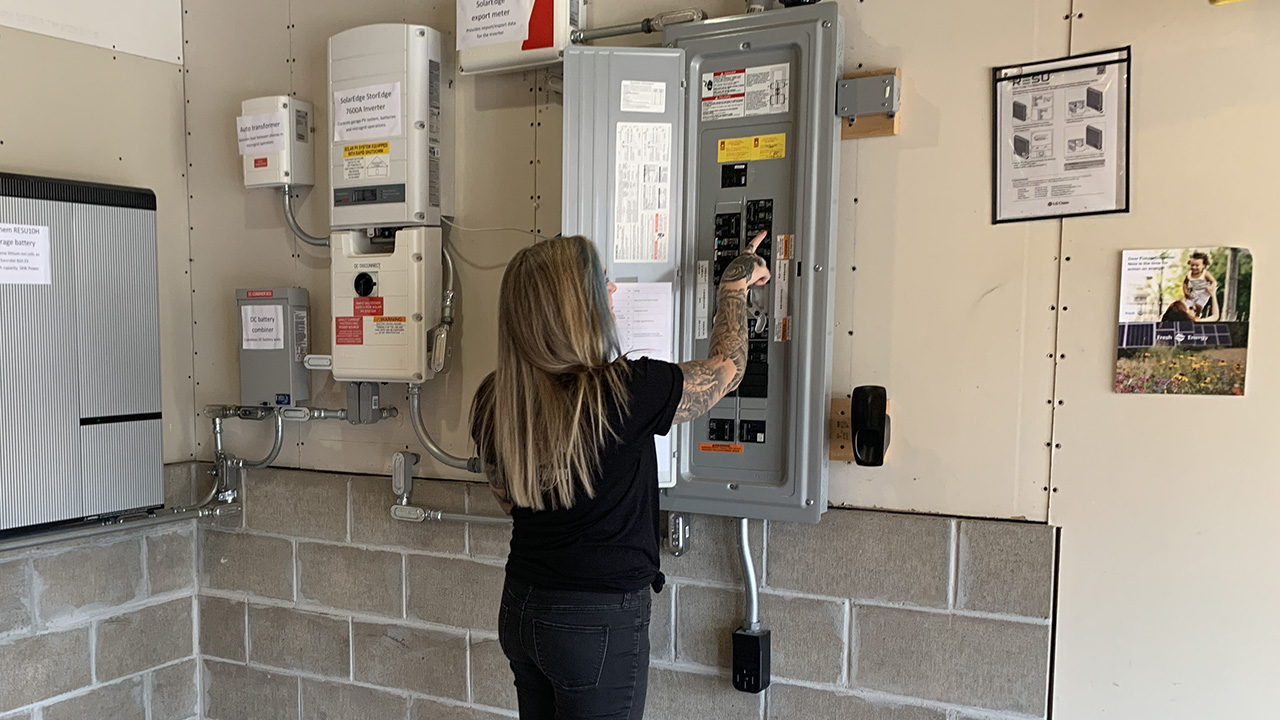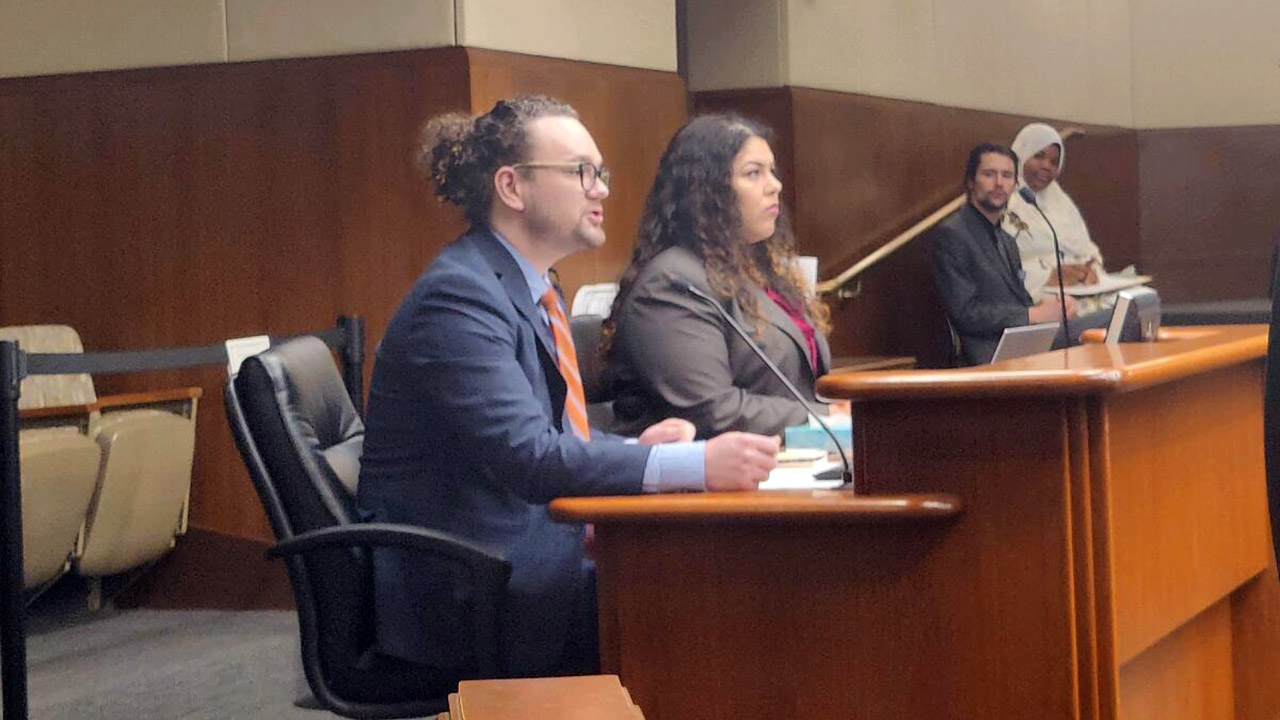
Buildings are a key source of carbon pollution—both globally and in Minnesota—contributing 40 percent of U.S. greenhouse gas emissions. And while Minnesota’s electricity and transportation sectors are getting cleaner, pollution from buildings continues to grow every year.
An Intergovernmental Panel on Climate Change (IPCC) report, released in April 2022, highlighted a source of emissions that is hidden in plain sight: our buildings. “Over the period 1990-2019, global CO2 emissions from buildings increased by 50%,” according to the IPCC. While buildings make up a smaller portion of greenhouse gas emissions than transportation or electricity generation, the emissions are trending in the wrong direction. In the last decade, while other emissions decreased, building emissions rose.

To help solve this problem, Fresh Energy is focused on reducing emissions from both new and existing buildings in Minnesota. One of the ways we are doing this is by ensuring our buildings are future-proof and ready for the next generation of clean, efficient, electric heating, hot water, and cooking. To learn more about our broader healthy buildings work that includes building codes, energy efficiency, and beyond, check out this blog.
In 2022, Fresh Energy’s policy staff identified electric panel updates as a strategic way to speed up home electrification and as a result, Fresh Energy worked to advance an electric panel upgrade program during the 2022 legislative session. The bill aimed to prepare Minnesota’s existing residential single family and multifamily buildings for the transition to fossil-free electricity.
As it happens, Fresh Energy was ahead of the curve! In August 2022, President Biden signed the Inflation Reduction Act (IRA) into law, effectively making the largest investment in climate action in U.S. history that will result in 1 billion metric tons of annual emissions reductions by 2030—and tax incentives and rebates for electric panel upgrades were part of the solution-based policies included in the bill.
Why electric panels?
A home’s electric panel can be a surprising roadblock to home electrification. Most residents realize that in order to upgrade to electric hot water, they’ll need to replace their gas hot water heater with a heat pump (sometimes called hybrid) water heater, or a simple electric water heater. Likewise, in order to quickly charge an electric car, a home’s garage would need a 240-volt outlet (most outlets are 120-volt). But often these upgrades can be delayed when residents realize that their home does not have enough electrical capacity to support all-electric appliances and charging equipment. Upgrading to a 200-amp electric panel—the standard for full electrification in most single-family homes—can cost thousands of dollars.
This is the roadblock that the federal government through the IRA and Fresh Energy through Minnesota policy are seeking to eliminate. Research organization, Pecan Street, estimates that 48 million homes nationwide may require electric panel upgrades to fully electrify. In early 2023, the Center for Energy and Environment released a report on the cost to electrify 1-4 unit residential buildings in Minneapolis alone. CEE estimated an upfront cost of $164 million to $213 million just to upgrade electric service—that’s not counting larger residential buildings or commercial buildings, let alone costs throughout Minnesota. This means we need to start now.
But the benefits of updating an electric panel go beyond the emissions reductions of removing fossil gas-powered appliances. Outdated panels can be a safety risk, as well as a quality-of-life issue, when too many outlets are sharing the same circuit, leading to tripped breakers from the toaster, a fan, or a blow dryer.
Equity and the energy transition
Like all of our programs at Fresh Energy, our work on electric panel policy puts equity front and center. Paying for electric panel upgrades is an expensive undertaking, so we want to ensure this program exemplifies equity and prioritizes benefiting under-resourced households. The program invests in low and middle-income households, with the largest grants for those under 80% of the Area Median Income. In most cases, it will cover the entire upgrade.

Another benefit to this program is avoiding a common gap that is created by reimbursements, tax credits, and partial matches: If you don’t have the upfront cash to cover the full upgrade or the remaining difference, you cannot benefit from the program.
“Fresh Energy worked with a variety of partners to design a program that would meet Minnesotans where they are,” said Mari Ojeda, senior policy associate on Fresh Energy’s Energy Access and Equity team. “We need to be proactive in reducing barriers for folks that want to prepare their houses and apartments for our transition to clean energy.”
Status update at the Minnesota Legislature

Fresh Energy’s electric panel upgrade grant program would help Minnesotans upgrade single and multi-family residential electric panels in low- and middle-income homes. The bill was authored in 2022 by a bipartisan team—Representative Athena Hollins in the House and Senator Jason Rarick in the Senate—and is being heard again in the 2023 legislative session. Eric Folwer, senior policy associate on Fresh Energy’s Buildings team, testified in support of the bill (HF849) at the House Climate and Energy Committee in March of 2023 and we anticipate the bill will continue progressing from here.e
Stay tuned for updates from the Senate, where Senator Tou Xiong is carrying the bill!

